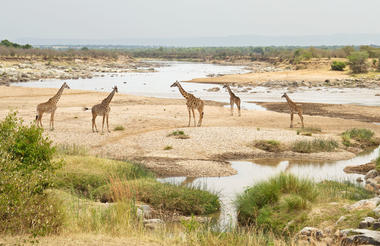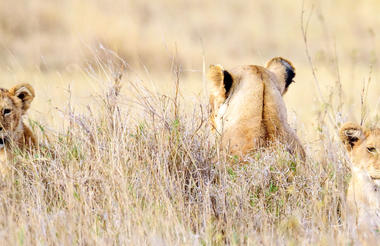Arusha is the safari capital of Tanzania - nestled below Mt. Meru and close to Mount Kilimanjaro. From Arusha there are options to head to Lake Manyara, Tarangire and Ngorongoro National Parks and from there it’s a short trip to the Serengeti. Arusha was built by the Germans as a centre of colonial administration because of the temperate climate.

Tarangire National Park is known for having the greatest concentration of wildlife outside of the Serengeti eco-system. Named after the river that crosses through it, this park at 1,100 square miles located southwest of Arusha, is sometimes sadly missed by those heading for the more well known of the National Parks in Tanzania. Yet we can highly recommend it for its elephant migration, quiet authentic atmosphere and fantastic birding opportunities. During the dry season, the river is the only source of water for many animals, with thousands migrating to it from the nearby Lake Manyara National Park. The landscape here is diverse, with a mix of habitats that are unique to the area and not found anywhere else: hilly landscapes are dotted with vast numbers of baobab trees, dense bush and high grasses. Herds of up to 300 elephants congregate here, whilst migratory wildebeest, zebra, buffalo, impala and eland can also be seen, with the accompanying predators following along behind. On drier ground you find the Kori bustard, the heaviest flying bird; ostriches, the world's largest bird; and small parties of ground hornbills blustering like turkeys.
The park is also famous for the termite mounds that dot the landscape. Those that have been abandoned are often seen to be home to dwarf mongoose.
The swamps, an oasis of green year round, are where you will find over 550 bird species, the most breeding species in one habitat anywhere in the world. It is a birder's dream with frequent sightings of yellow-collared lovebirds, which can be seen during a game drive alongside the river.
Tarangire's pythons climb trees, as do its lions and leopards, lounging in the branches where the fruit of the sausage tree disguises the twitch of a tail.
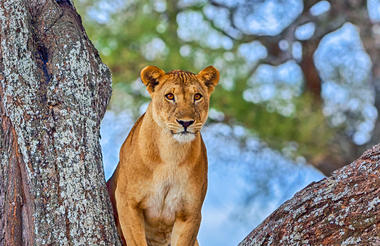
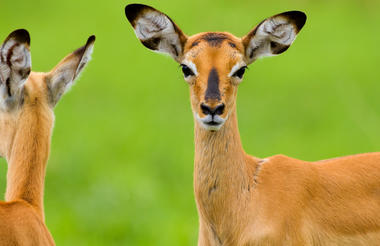
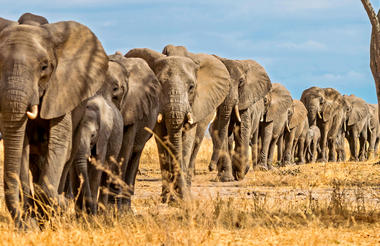
The Ngorongoro Crater, once a gigantic volcano, is the largest intact caldera in the world. Some maintain that before it erupted, it would have been higher than Mt Kilimanjaro, the highest peak in Africa. Today, long since having collapsed and eroded, it is an extensive highland area with the famous 600 meter deep Ngorongoro Crater as its focal point. Nearly three million years old, the ancient caldera shelters one of the most beautiful wildlife havens on earth. Fresh springs and a large soda lake quench the thirst of all the inhabitants.The Ngorongoro Crater is game viewing gone crazy and it is not surprising that it is one of Tanzania’s major tourist drawcards Black rhino are protected within its rim, giant tusked elephants wander the forests, black-maned lions stalk the grasslands, and flamingos crowd the soda lakes. It is also one of the view places where hyenas can be seen roaming during the daylight. Outside of the crater Masaai herdsmen can be seen tending to their flocks of goats and herds of cattle.
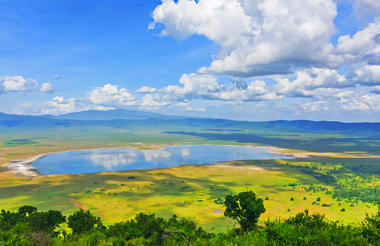
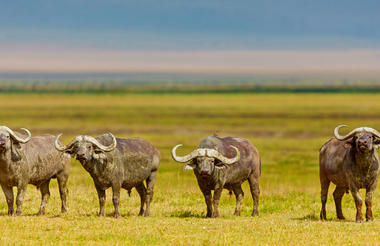
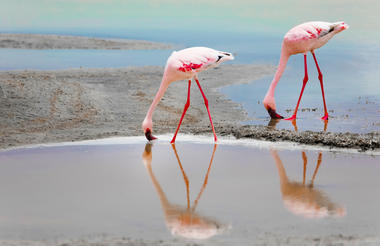
The Serengeti together with Kenya’s Masai Mara Game Park form Africa’s most famous wildlife park. The image of acacia trees on an endless grass plain epitomises Africa for many, and then add a Masai warrior and some cattle to the picture and the conversation need go no further. Unlike the southern plains of the Serengeti that dry out, forcing all but the hardiest of species to leave, the Northern Serengeti remains lush and green throughout the year. The annual wildebeest migration through the Serengeti and the Masai Mara is the largest mass movement of land mammals on the planet – with more than a million animals following the rains. From July through to October the Migration is in the Northern Serengeti and this is where many of the most famous scenes of the Migration occur with almost daily crossings of the Mara River. But that is not where the game viewing ends; large prides of lions, elephants and giraffes in grasslands, gazelles and eland to mention but a few.
NOTE: Animals are wild and sightings can not be guaranteed
